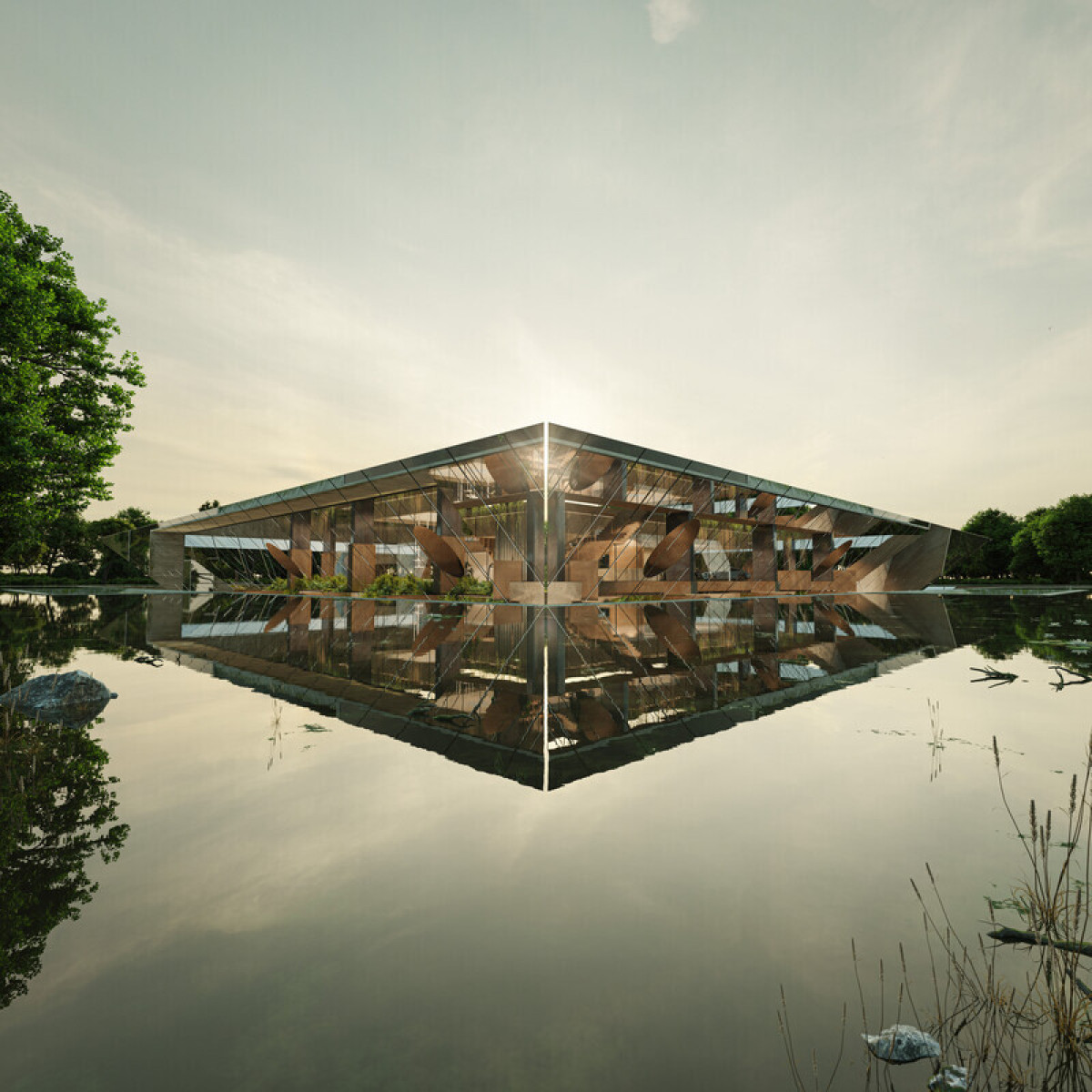05 Aug 2024

Challenges such as limited space and the urgency for sustainability are prevalent in today's construction landscape. The Periscope project by Claerhout – Van Biervliet Architects offers an innovative solution, including a transformation of our perception of reality.
The Periscope House is a residence, built completely below terrain level. It has a large central patio in the heart of the building, and a contour of outdoor space, both below ground.
The idea of a subterranean building offers multiple advantages, including excellent thermal insulation against both heat and cold. It also has less visual impact on the landscape. Underground spaces are also challenging since they often provide a dreary, dark, and unpleasant atmosphere to live or work in. They also lack views of the surrounding landscape.
The Periscope House offers a solution to bring the necessary light and view to these underground spaces. Though the building itself is a fixed subterranean structure, it has a contour of movable double mirror structures, functioning as a Periscope. Following the principle of a periscope, these double mirrors are set at a 45-degree angle. The mirrors are mounted on structures that can be independently raised to optimize light and view for the underground levels. The building has 2 subterranean levels and, according to the use of the space at a certain moment, the mirrors can be put at the level where light and view are requested. At night, when light and a view of the scenery are no longer required, the mirror structures descend to disappear in the landscape again.
This way, natural light and scenic views can penetrate deep into the structure, making this periscope structure an actual "space enhancer."
The mobility of the mirrored parts surrounding the building serves another sustainability purpose. The upper mirror construction serves as a plant container for hanging plants and shrubs, offering lush green deep into the building. During the day, the mirrors are elevated using solar-powered engines. As the sun sets, the mirrors descend, slowly enclosing the building again. Thanks to the heavy planters, lifted to raise the mirrors above the landscape, the potential gravitational energy of this descending mass can be converted into mechanical energy, which subsequently drives a generator to produce electrical energy.
Using this essential part of the building as a gravity battery provides an environmentally friendly solution for storing renewable energy, especially since the energy for lifting these parts is provided by solar panels mounted on the upper levels of the containers.
Even though it might appear as a rather high-tech solution, the technologies involved are common and are used for other purposes in the built environment. Implementing them on this next level, therefore, is feasible.
This Periscope House is focused on a residential application, but it is also useable in other contexts or functions, such as offices, cultural spaces, and museums, where this new potential of underground spaces can offer unexpected opportunities.
The ultimate aim of the Periscope is to craft an innovative building that contributes to a more sustainable world. The architectural layout draws inspiration from the spatial traditions of Roman and Palladian villas.
The Periscope system offers more than a reflection of reality - it revolutionizes our perception by entirely displacing it.
Technical sheet